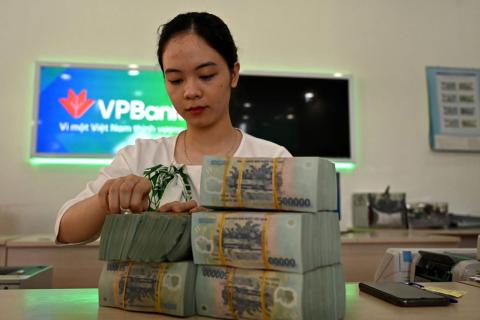The world must return its focus to the fight against global poverty. The Covid-19 pandemic pushed millions more into extreme poverty while the global economic recovery thereafter has seen poorer countries left behind. The World Bank says the first of the Sustainable Development Goals to end extreme poverty by 2030 will not be met, projecting 574 million people – nearly 7 percent of the world – to still be living on less than US$2.15 a day, or what is known as the extreme poverty line.
We also cannot forget that $2.15 a day is a very low bar. People earning even twice as much are often the same people slipping in and out of destitution that in turn make up the extreme poverty numbers. And even those earning three times more would still be considered very poor in rich countries.
It’s not that there hasn’t been progress. Three decades ago, about 2 billion people, or almost 40% of the world, was living on the equivalent of less than $2.15 a day. In 2019, the figures were about 700 million people or 9% of the world’s population.
Then Covid struck. The World Bank estimates that in 2022 there was about 70 million more people living in extreme poverty due to the impacts of the pandemic and Russia’s subsequent invasion of Ukraine relative to what they had previously expected.
But even allowing for the progress made prior to the pandemic, poverty remains widespread.
Contrast the following two charts.
The first shows that the incredible progress over previous decades in reducing extreme poverty can largely be attributed to rapid economic growth in Asia. In 1990, more than 70% of China’s population was living in extreme poverty. By 2019, it was virtually zero on the World Bank’s numbers. Sharp declines in extreme poverty also occurred in places such as Indonesia and Vietnam, where the latest rates are 2.5% and 0.7% respectively. South Asia too saw considerable progress, although 11% of its population still lives in extreme poverty.
Not all regions have had the same success as Asia. Today, the majority of extreme poverty is concentrated in sub-Saharan Africa, home to almost 400 million people living below the extreme poverty line – or about 35% of its population. Related to this, eradicating extreme poverty is getting harder as it is increasingly concentrated in countries with especially weak governance, in conflict zones, and among rural households and other marginalised groups.
It’s also important however to look beyond the extreme poverty numbers. The World Bank recommends using $3.65 a day for lower middle-income countries and $6.85 a day for upper middle-income ones. For comparison, only the poorest 2% of people in high income countries live on less than $6.85 a day, according to World Bank numbers.
Using $6.85 a day as a reasonable benchmark for thinking about global poverty paints a much bleaker picture (see the second chart). On this measure, some 3.6 billion people still lived in poverty in 2019, roughly the same as three decades ago. To be sure, the share of the world living below this higher poverty line has also come down materially, from 70% in 2000 to less than 50% today. The lack of progress in reducing the total number living in poverty therefore reflects a larger global population. Nonetheless, in terms of the absolute amount of human wellbeing (conversely deprivation) in the world, this is a very troubling picture.
Focusing on the higher line also shows that poverty is not only a problem in Sub Saharan Africa, even if it is certainly far more extreme there. A third of people in East Asia – nearly 700 million – still live in poverty. About a quarter of people remain poor in China – despite it being an upper middle-income country and pretty close to being high income. Indonesia became an upper middle-income country in 2023, but about 60% of its population still lives in poverty.
The majority of people in poverty by this measure, however, are found in South Asia, at about 1.6 billion or more than 80% of its population. South Asia is still a region of lower middle-income countries. Nonetheless, using the lower middle-income line the picture is also stark, with about 840 million people or almost 45% of its population still in poverty.
Any way you look at it then, the fight against global poverty is far from over, even in countries seemingly doing well. The future is also more uncertain than it has been for a long time. As the world economy now hopefully recovers from the major shocks of recent years, the focus needs to be on renewing global progress on this basic measure of human wellbeing.


